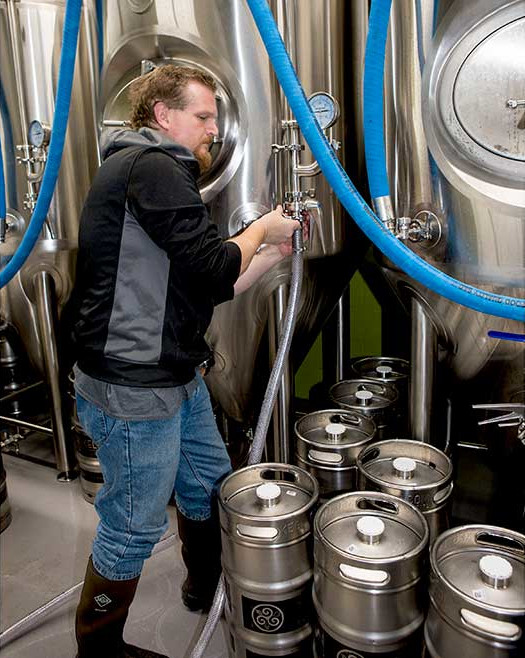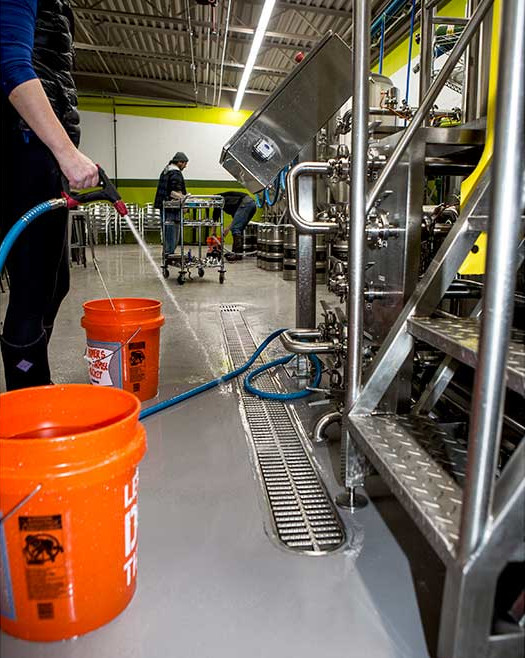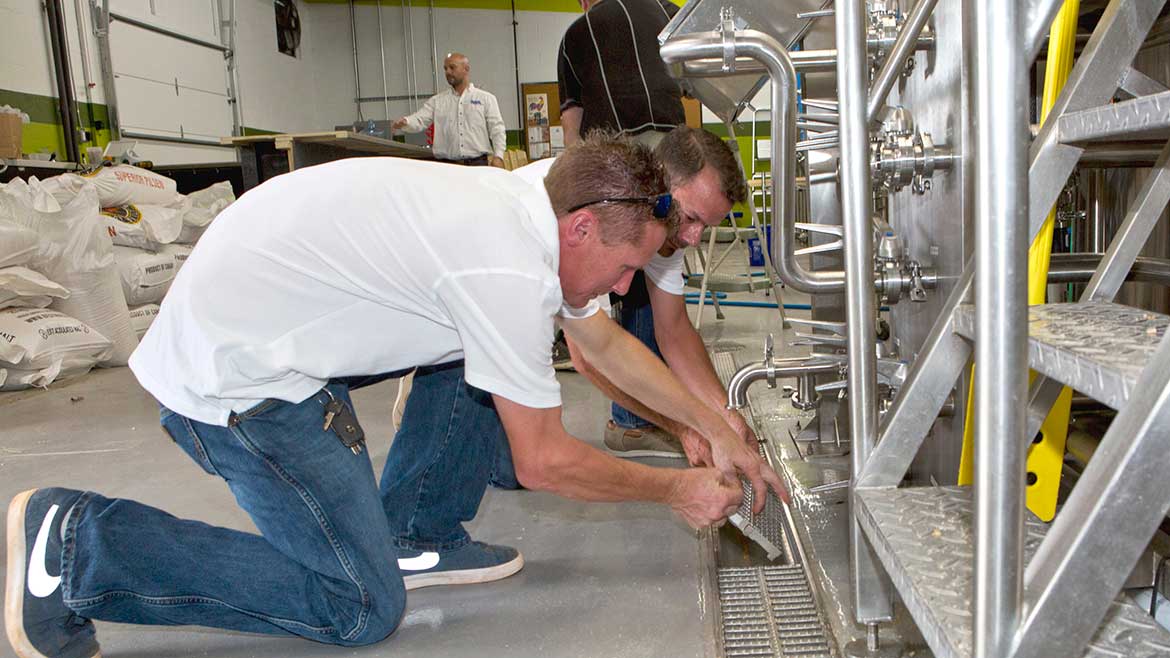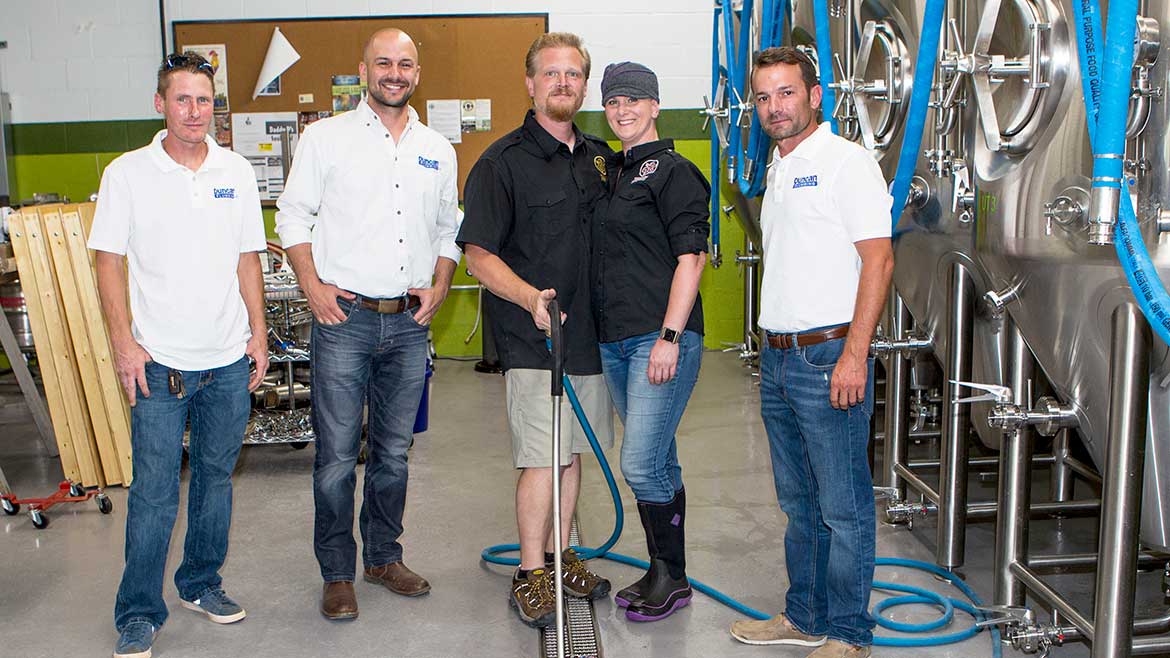There may be something in the water in North Carolina that’s driving its residents to beer.
Travel (walk, don’t drive) across the state and you’ll bump into one of its 257 microbreweries. Of course, before long, your route won’t be straight at all; things tend to get a bit wobbly after that many IPA samplers.
The state now ranks eighth nationally for the number of microbreweries, and fifth in year-to-year growth — topping $2 billion in revenue a few years ago.
Think of it: The state’s hops-brewing enterprises now produce more than 1.3 million barrels of beer annually; that’s five gallons of beer for every person over the age of 21. According to the Brewer’s Association, microbrewing is one of the fastest-growing segments of the economy today.
Triskelion Brewing was located in Hendersonville, 75 miles west of Charlotte. A triskele, or triskelion, is an ancient Celtic symbol that includes three symmetrically-joined spirals. The brewery’s logo shows the triple-spiral design, now representing the three crucial beer ingredients: water, barley and hops.
Young entrepreneurs and co-owners/brewers Jonathan and Becky Ayers have plenty to be excited about. They’re as passionate about the facility as they are about new blends, and naming them.

Triskelion Brewing co-owner Jonathan Ayers. Right: Floor-rinsing in the brewery.

NEW BREWERY
“Every detail about our facility has been planned from the beginning,” Jonathan Ayers says. “A few years ago, we started with a blank slate, creating a dream with no constraints. Today, I’m pinching myself; I can’t be sure I’m not still dreaming.
“We completed the construction of two new structures — the brewhouse and the taproom — so we wanted to be sure to get everything as close to perfect on paper before spending real money,” he adds.
“The brewhouse is about as automated as you can get without being a large brewery,” Jonathan Ayers says. “The computer automation saves me countless hours of guesswork. It gives me the time to develop and refine [beer] recipes. Even our water and drainage systems are state-of-the-art.”
In the 2,400 square foot brewhouse, there are seven barrel fermenters producing up to 14 barrels of beer each day. The system also allows for major expansions down the road.
“As we got close to construction time in early 2017, we changed our plan of having one combined building for the both brewhouse and taproom,” Jonathan Ayers says. “Ultimately, we decided to make sure the brewhouse was completed first, with a tasting room right inside the brewhouse.”

Duncan Plumbing's Lead/Master Plumber Jeff Ballard, and Scott Duncan, examine one of the Blucher stainless steel trench drain grates.

Duncan Plumbing's Phillip Duncan, senior estimator and project manager, checks the precise fit of a stainless steel trench drain grate as brewery co-owner, Becky Ayers, looks on.
IT’S ALL IN THE DETAILS
“Some of the most important decisions gave us a foundation for our future here,” Jonathan Ayers says. “Few would guess that those most-important decisions had to do with building infrastructure, drainage and water conservation — issues today that are the focus of new state and federal regulations, very difficult and expensive to implement as a retrofit, yet easy on the front-end.”
Jonathan refers to it as “spending money on the backbone.”
By that he means the equipment, products and technology around which all facets of their operation are built — such as the systems that prevent water loss, or improve water quality.
“As we planned, we spoke with a lot of microbrew owners,” Jonathan Ayers continues. “The name ‘Watts’ kept coming up, so we looked further. Among other things, we learned they had drain systems that fully resisted the challenge of acidic, ingredient and residue-rich or super-hot drainage. For instance, some of our new drains have collection baskets, easily removed after draining loads of hops effluent.
“After speaking with Daniel [Daniel Clyburn, with Charlotte, North Carolina-based manufacturer’s rep firm, Smith & Stevenson] and Watts Sales Manager, Jimmy Hunt, we decided their ‘OneWatts,’ single-source provider program made great sense to us, so we purchased every technology we could,” he added. “The idea also sounded good to Scott and Phillip Duncan, owners of [Rutherfordton, North Carolina-based] Duncan Plumbing, who we chose to do all the plumbing work here.”

Duncan Plumbing Lead/Master Plumber Jeff Ballard (left), Phillip Duncan (left center), and Scott Duncan (far right) pose in the brewery with brewery owners Jonathan and Becky Ayers during their first use of the Blücher HygienicClean drain washer.
According to Phillip Duncan, Watts’ technology installed at Triskelion includes solutions for the brewhouse, fermentation and packaging rooms, the taproom and outside bar. The solutions include:
- Process wastewater systems. Three separate HygienicPro trench drains: A total of 75 feet. One is in the brewhouse and the others have roles in the fermentation and packaging areas. These feed into 80 feet of push-fit stainless steel BLÜCHER pipe under the brewhouse because of the need to dump high-temperature (180° F) slurry into it. The slurry is way too acidic for iron and too hot for composite.
- Process water supply. Carbon water filtration cartridges were installed on the city water line feeding the brewhouse and the water supply for the new taphouse. Each cartridge lasts three to four months, costs $8 to replace and can be bypassed for washing.
- Gas supply. A Dormont stainless steel gas connector is attached to the brewery’s tankless (domestic) water heater.
- Sanitary drains. Twenty-five feet of DeadLevel composite trench drain was installed behind the main taproom bar. The trench drain features stainless steel grate for easy cleaning. There’s also a BLÜCHER WaterLine channel, mini-trench drain for the outside bar.



